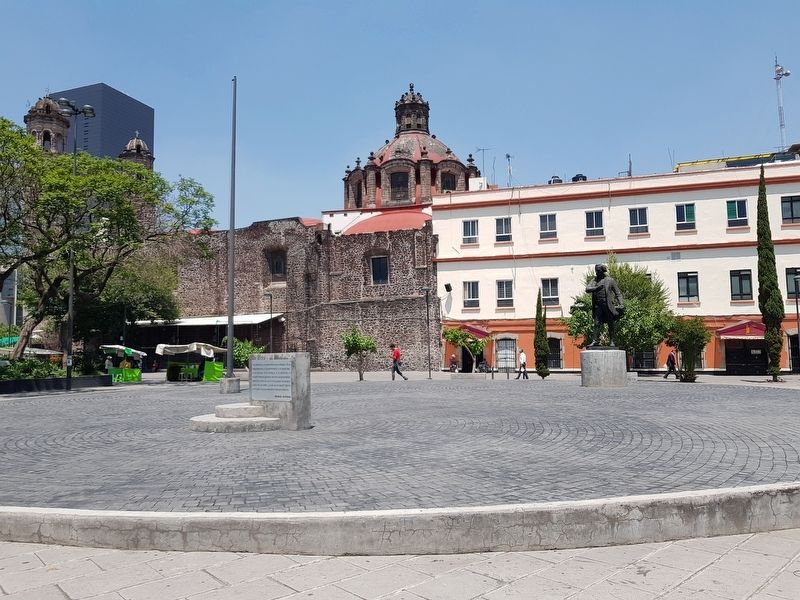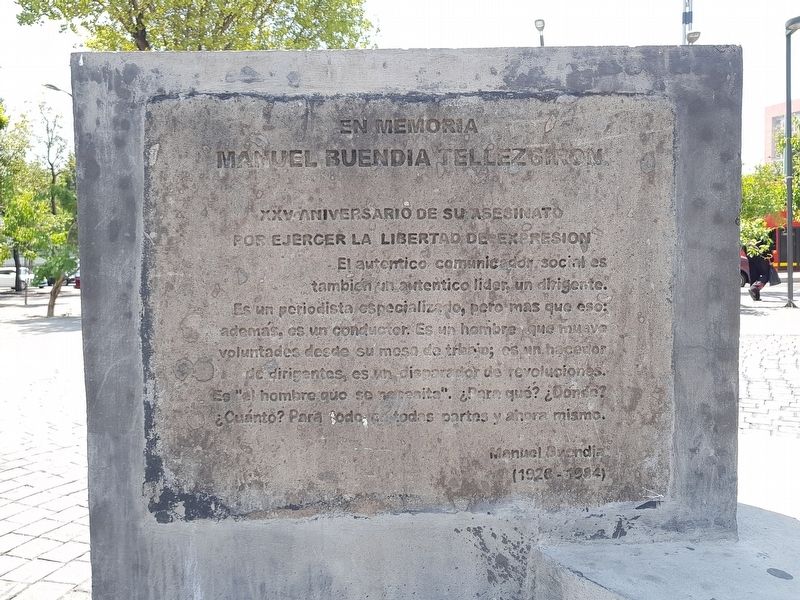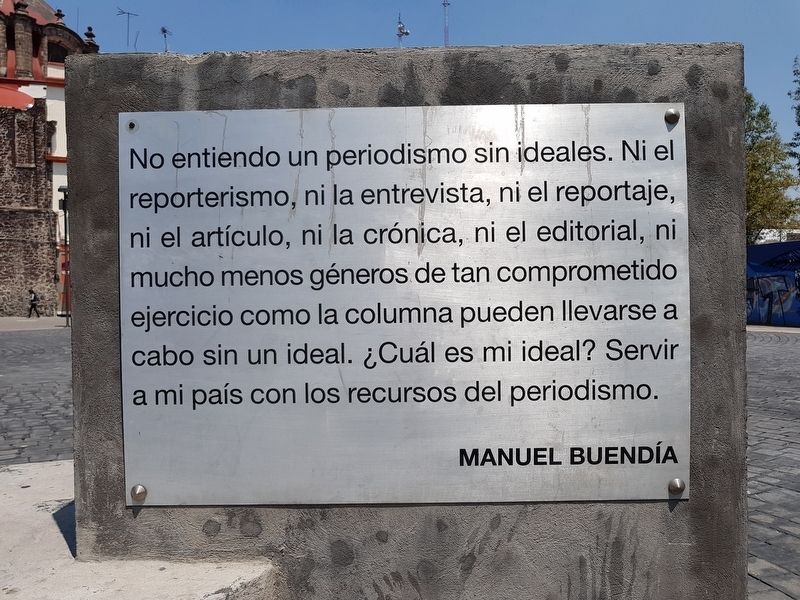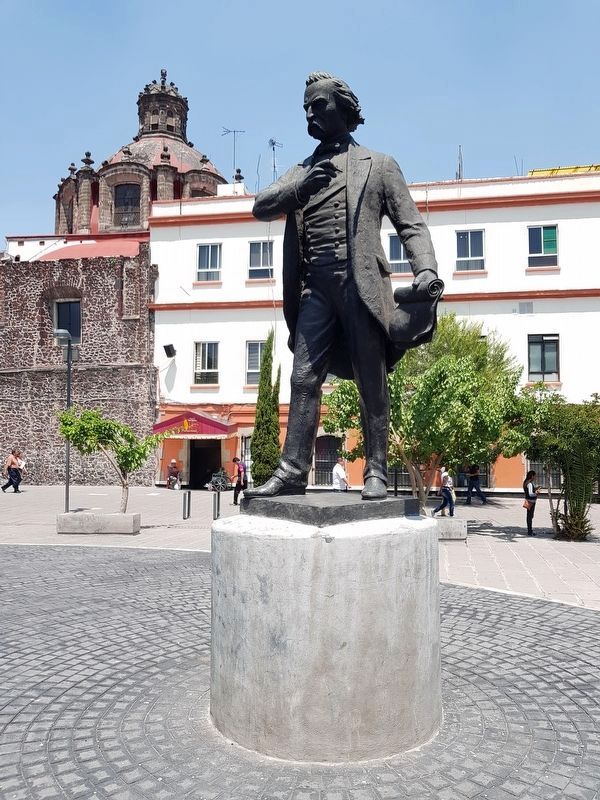Centro Histórico in Ciudad de México, Mexico — The Valley of Mexico (The Central Highlands)
Manuel Buendía
Manuel Buendia Tellezgiron
XXV aniversario se su asesinato
por ejercer la libertad de expresion
Manuel Buendia
(1926-1984)
No entiendo un periodismo sin ideales. Ni el reporterismo, ni la entrevista, ni el reportaje, ni el árticulo, ni la crónica, ni el editorial, ni mucho menos géneros de tan comprometido ejercicio como la columna pueden llevarse a cabo sin un ideal. ¿Cuá es mi ideal? Servir a mi país con los recursos del periodismo.
Manuel Buendía
Manuel Buendía Tellezgiron
25th anniversary of his murder for exercising the freedom of expression
Manuel Buendia
(1926-1984)
I do not understand a journalism without ideals. Neither the reporter, nor the interview, nor the report, nor the article, nor the chronicle, nor the editorial, much less other exercises that make up the profession such as writing columns, can be carried out without an ideal. What is my ideal? To serve my country with the resources of journalism.
Manuel Buendía
Erected 2009.
Topics. This historical marker is listed in this topic list: Arts, Letters, Music.
Location. 19° 26.296′ N, 99° 8.774′ W. Marker is in Ciudad de México. It is in Centro Histórico. Marker is on Paseo de la Reforma just south of Calle San Esmeralda, on the right when traveling south. Touch for map. Marker is in this post office area: Ciudad de México 06300, Mexico. Touch for directions.
Other nearby markers. At least 8 other markers are within walking distance of this marker. Temple of San Hipólito y Casiano (about 90 meters away, measured in a direct line); The Temple of San Hipólito (about 90 meters away); The Hospital of San Hipólito (about 120 meters away); First Mass Arrest of Gays in Mexico (about 150 meters away); Melchor Ocampo (about 180 meters away); Jesús Terán Peredo (about 180 meters away); Miguel Lerdo de Tejada (about 180 meters away); Anastasio Parrodi (about 180 meters away). Touch for a list and map of all markers in Ciudad de México.
Also see . . . Manuel Buendía. Manuel Buendía Tellezgirón (24 May 1926 – 30 May 1984) was a Mexican journalist and political columnist who worked for the daily Excélsior, one of the most-read newspapers in Mexico City. His direct reporting style in his column Red Privada ("Private Network"), which publicly exposed government and law enforcement corruption, organized crime, and drug trafficking, was distributed and read in over 200 newspapers across Mexico. Born in the state of Michoacán, Buendía first wrote for La Nación, the official magazine of the National Action Party (PAN). After losing interest in the party, he left to work for La Prensa and became the editor-in-chief in 1960. He left the newspaper in 1963 and worked for several different media outlets in Mexico throughout the 1970s and '80s, including the Mexico City-based

Photographed By J. Makali Bruton, July 24, 2018
3. Manuel Buendía Marker
The Manuel Buendía Marker is the small pedestal seen here to the left. To the right is a statue of Francisco Zarco (1829-1869), an earlier proponent of the freedom of the press and speech. Interestingly, Zarco has another statue of him nearby further south along Paseo de la Reforma.
Credits. This page was last revised on April 17, 2020. It was originally submitted on July 31, 2018, by J. Makali Bruton of Accra, Ghana. This page has been viewed 281 times since then and 12 times this year. Photos: 1, 2, 3, 4. submitted on July 31, 2018, by J. Makali Bruton of Accra, Ghana.


